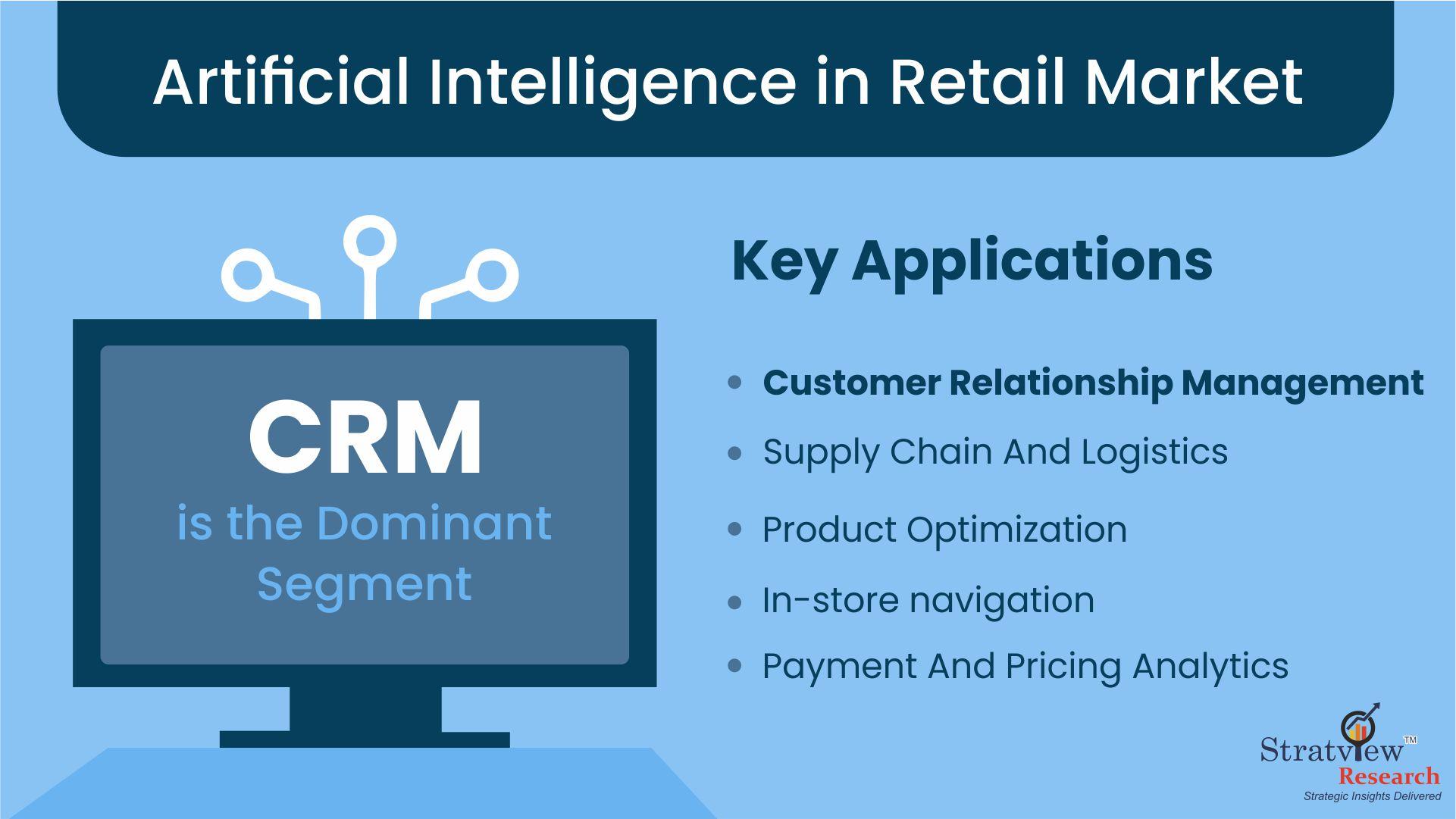According to Stratview Research, artificial intelligence in retail market was estimated at USD 5.79 billion in 2022 and is likely to grow at a CAGR of 23.20% during 2023-2028 to reach USD 20.26 billion in 2028.
In the ever-evolving landscape of retail, the infusion of Artificial Intelligence (AI) is not merely a technological upgrade but a revolutionary force reshaping the very fabric of shopping experiences. From personalized recommendations to streamlined operations, AI is playing a pivotal role in transforming how consumers interact with brands and make purchasing decisions. Join us as we explore the profound impact of Artificial Intelligence on shopping experiences and the future it holds for the retail industry.
Personalization Redefined:
One of the most remarkable ways AI is revolutionizing retail is through hyper-personalization. Advanced algorithms analyze vast amounts of data, enabling retailers to tailor recommendations, promotions, and content to individual customer preferences.
Recommendation Engines: AI-powered recommendation engines go beyond generic suggestions. They analyze a shopper's past behavior, preferences, and even real-time interactions to offer highly relevant and personalized product recommendations, creating a more engaging and enjoyable shopping experience.
Personalized Marketing Campaigns: AI enables retailers to create targeted marketing campaigns that resonate with specific customer segments. By understanding individual preferences and purchase history, brands can deliver tailor-made messages, increasing the likelihood of conversion.
Enhanced Customer Engagement:
AI transforms customer engagement by providing retailers with insights that foster meaningful interactions and strengthen the bond between brands and consumers.
Chatbots and Virtual Assistants: AI-driven chatbots and virtual assistants provide instant, round-the-clock customer support. They can answer queries, assist with product selection, and even process transactions, enhancing customer satisfaction and freeing up human staff for more complex tasks.
Voice Commerce: The rise of voice-activated AI assistants has given birth to voice commerce. Shoppers can now browse and make purchases using voice commands, offering a seamless and hands-free shopping experience that integrates effortlessly into consumers' daily lives.
Efficiency in Operations:
Beyond elevating customer interactions, AI is streamlining retail operations, optimizing supply chains, and enhancing overall efficiency.
Inventory Management: AI algorithms analyze historical sales data, current trends, and external factors to optimize inventory management. This minimizes stockouts, reduces overstock situations, and ensures that products are available when and where customers demand them.
Automated Checkout Processes: The advent of cashierless stores and automated checkout processes, powered by AI, provides shoppers with a frictionless experience. By leveraging computer vision and sensor technologies, retailers can eliminate traditional checkout lines, allowing customers to grab their items and go.
Visual Merchandising and Augmented Reality:
AI is reshaping the way products are showcased and experienced in both physical and online retail environments.
Visual Search and Recognition: AI-powered visual search allows consumers to find products by uploading images or using their smartphone cameras. This technology enables a more intuitive and efficient shopping experience, particularly when customers are looking for specific items based on visual cues.
Augmented Reality (AR): AR applications allow customers to virtually try on clothing, visualize furniture in their homes, or see how cosmetics look on their skin. This interactive and immersive experience bridges the gap between the online and offline shopping worlds, providing customers with a more informed purchasing decision.
The Road Ahead:
As we witness the transformative impact of AI on shopping experiences, the road ahead promises even more innovation and integration. Technologies like machine learning, natural language processing, and predictive analytics will continue to evolve, shaping a future where retail is not just transactional but an immersive, personalized journey for every shopper.
Conclusion:
The revolution in retail powered by Artificial Intelligence is not a mere trend but a fundamental shift in how brands and consumers interact. From personalized recommendations that anticipate desires to operational efficiencies that redefine convenience, AI is carving a path toward a retail landscape where every shopping experience is unique, seamless, and thoroughly engaging. As retailers embrace the possibilities of AI, the revolution continues, promising a future where the boundaries between online and offline retail blur, and the art of shopping is elevated to new heights.
